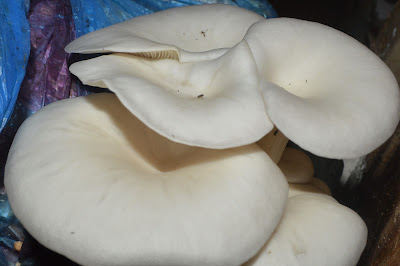MAMALAND ONLINE MUSHROOM PRODUCTION COURSE (MOMPC):
AN E-AGRICULTURE CONNECTS INFORMATION TECHNOLOGY AND MYCOLOGICAL SCIENCES IN AFRICA.
Information and communication technology in agriculture (ICT in agriculture), also known as e-agriculture, is developing and applying innovative ways to use ICTs in the rural domain, with a primary focus on agriculture. ICT in agriculture offers a wide range of solutions to some agricultural challenges. It is seen as an emerging field focusing on the enhancement of agricultural and rural development through improved information and communication processes.
E-agriculture continues to evolve in scope as new ICT applications continue to be harnessed in the agriculture sector. More specifically, e-agriculture involves the conceptualization, design, development, evaluation and application of innovative ways to use ICTs in the rural domain, with a primary focus on agriculture. Provisions of standards, norms, methodologies, and tools as well as development of individual and institutional capacities, and policy support are all key components of e-agriculture. Through ICTs, Mamaland Online Mushroom Production Course have a possibility of strengthening the linkage between extension, research and farmers.
ICTs and agricultural extension services.
• ICTs are very useful in agricultural extension and advisory services and in facilitating reaching out to family farmers.
• Extension and Advisory services play a crucial role in promoting agricultural productivity, increasing food security, improving rural livelihoods.
The specific roles of agricultural extension services were enumerated as aiming to,
• Improve the wellbeing of individuals and communities.
• Change production systems so that they improve rural livelihoods and sustain the resource base.
• Improve agriculture and the social, economic and political status of rural communities.
• Improve the well-being of farm families.
• Improve productivity and livelihoods for farmers.
• Increase and improve farmers’ incomes and productivity on a sustainable basis.
• Enhance farmers’ production.
• Attain higher levels of efficiency in the farm enterprise.
• Attain food security and improve rural livelihoods.
Mamaland Online Mushroom Production Course deliver the freedom to learn and the tools to succeed, empowering you knowledge and boost your career in mushroom industry. Flexible learning on your schedule.
Below is the farm of the participant of Mamaland Online Mushroom Production Course.
Join to grab opportunities.
Anywhere, Anytime.
Mamaland Mushroom Farms (2015).
E-Mail:-Mamalandmushroomproject@gmail.com,
Phone: +255621-080300.
Twitter/Facebook/Linkedin/Google+:-
Mamaland Mushroom Farms.
Fight Back Against Malnutrition,Save Lives.
Mushroom is Therapy.






























